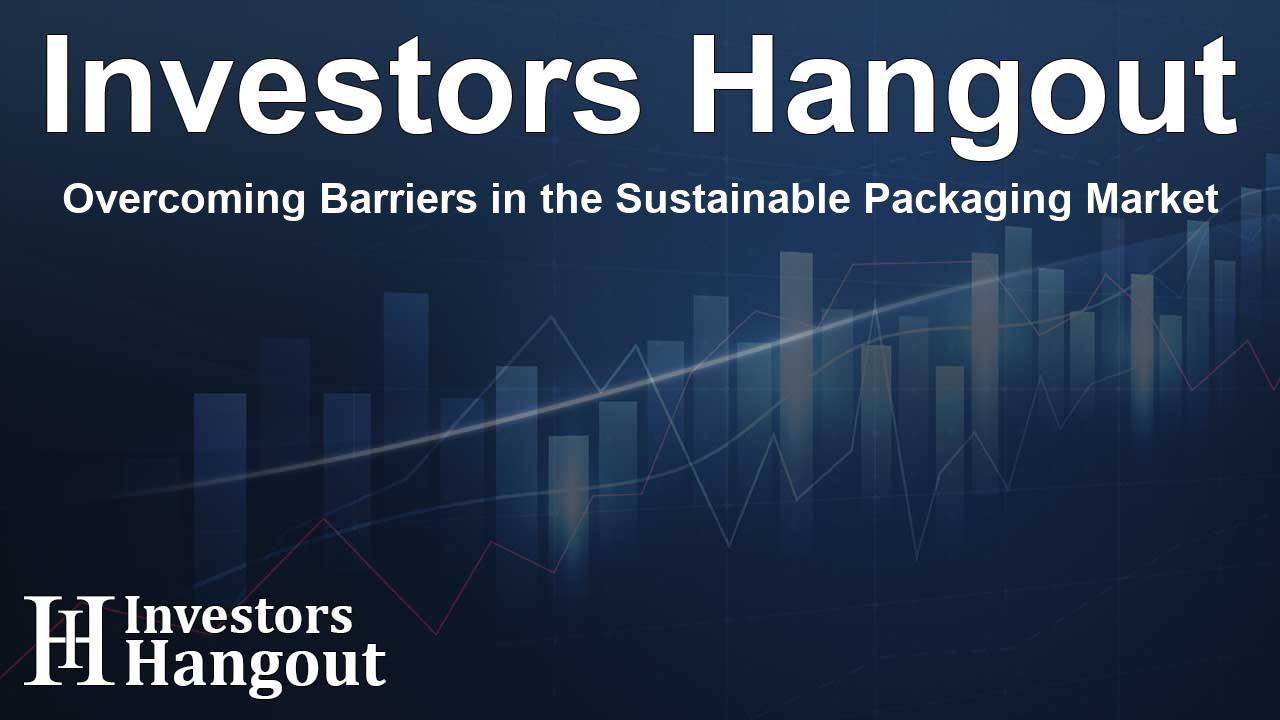Overcoming Barriers in the Sustainable Packaging Market

Exploring Challenges in the Sustainable Packaging Market
The global movement towards sustainable packaging is escalating, driven by an increasing commitment to environmentally friendly practices. Recent analyses reveal a notable expansion of the sustainable packaging market, projected to grow from USD 313.73 billion to USD 557.65 billion in the coming years, at a compound annual growth rate (CAGR) of 6.6%. Nevertheless, the transition to eco-friendly materials is hindered by six significant barriers that the industry must address.
Barriers Impacting Adoption of Sustainable Packaging
1. Cost Implications: The Expense of Sustainability
The price of sustainable packaging materials is often higher than traditional alternatives. For instance, high-quality recycled polyethylene terephthalate (rPET) costs considerably more than virgin materials due to supply constraints. According to projections, if all retailers fulfill their sustainability commitments, the global demand for recycled plastics could exceed supply significantly by 2030, which will likely keep prices elevated.
2. Performance Challenges: Achieving Quality Standards
Eco-friendly materials need to match the performance of conventional packaging. Polylactic acid (PLA), though biodegradable, often fails to meet the performance benchmarks set by polyethylene terephthalate (PET), particularly in terms of heat resistance and shelf-life durability. This inadequacy can affect product integrity and consumer perception.
3. Divergent Views on Sustainability Standards
The sustainable packaging domain suffers from a lack of consensus regarding what sustainability entails. While some companies emphasize carbon reduction, others prioritize recyclability, reusability, or biodegradability. This difference in focus creates confusion within the industry, complicating everything from marketing to compliance.
4. Fluid Regulatory Frameworks
The regulatory environment surrounding sustainable packaging is rapidly evolving, often inconsistently across different regions, creating a challenging landscape for compliance. This variability can lead companies to hesitate in investing in specific materials, as they may need to adjust to newly enforced regulations in the future.
5. Supply Chain Disruptions
Material shortages represent a significant barrier to the widespread adoption of sustainable packaging solutions. In many markets, particularly the United States, the availability of recycled plastics is insufficient to meet demand. This mismatch is particularly detrimental for smaller companies striving to transition to sustainable materials.
6. Limited Awareness of Available Solutions
Businesses often lack comprehensive information regarding available sustainable packaging options. This information deficit can cause organizations to rely too heavily on existing suppliers for updates, potentially leading to missed opportunities with innovative materials and techniques.
The Path Forward: Embracing Opportunities in Sustainability
Despite the existing challenges, the projected growth within the sustainable packaging market highlights a significant opportunity for transformation. Industry experts assert the importance of implementing strategic measures to unlock this potential. Companies should focus on conducting in-depth consumer research to gauge the willingness to invest in sustainable options, assess materials from a holistic perspective, and foster cross-industry collaborations to improve recyclability.
Conclusion: Navigating Towards Sustainable Solutions
The sustainable packaging market stands at a pivotal turning point. By implementing strategies to overcome these barriers through innovation and collaboration, companies can not only enhance their sustainability efforts but also secure a competitive edge in an increasingly conscious marketplace. The journey towards eco-friendly packaging is fraught with challenges, but it also presents vast opportunities for significant breakthroughs and advancements.
Frequently Asked Questions
What are the main challenges facing the sustainable packaging market?
The main challenges include high costs, performance limitations, lack of consensus on sustainability standards, evolving regulations, supply chain disruptions, and limited awareness of solutions.
How is the sustainable packaging market projected to grow in the coming years?
The market is expected to grow from USD 313.73 billion to USD 557.65 billion, reflecting a CAGR of 6.6% between 2025 and 2034.
What role do regulations play in sustainable packaging?
Regulations establish the framework within which companies must operate but can vary significantly across regions, impacting compliance costs and strategic decisions.
How can companies improve their sustainable packaging strategies?
Companies can improve their strategies by engaging in consumer research, evaluating materials holistically, forming partnerships, investing in research and development, and anticipating changes in policies.
What future trends are expected in the sustainable packaging market?
Future trends include increased demand for circular design, innovations in material science, and an emphasis on greater transparency regarding sustainability practices.
About The Author
Contact Riley Hayes privately here. Or send an email with ATTN: Riley Hayes as the subject to contact@investorshangout.com.
About Investors Hangout
Investors Hangout is a leading online stock forum for financial discussion and learning, offering a wide range of free tools and resources. It draws in traders of all levels, who exchange market knowledge, investigate trading tactics, and keep an eye on industry developments in real time. Featuring financial articles, stock message boards, quotes, charts, company profiles, and live news updates. Through cooperative learning and a wealth of informational resources, it helps users from novices creating their first portfolios to experts honing their techniques. Join Investors Hangout today: https://investorshangout.com/
The content of this article is based on factual, publicly available information and does not represent legal, financial, or investment advice. Investors Hangout does not offer financial advice, and the author is not a licensed financial advisor. Consult a qualified advisor before making any financial or investment decisions based on this article. This article should not be considered advice to purchase, sell, or hold any securities or other investments. If any of the material provided here is inaccurate, please contact us for corrections.
